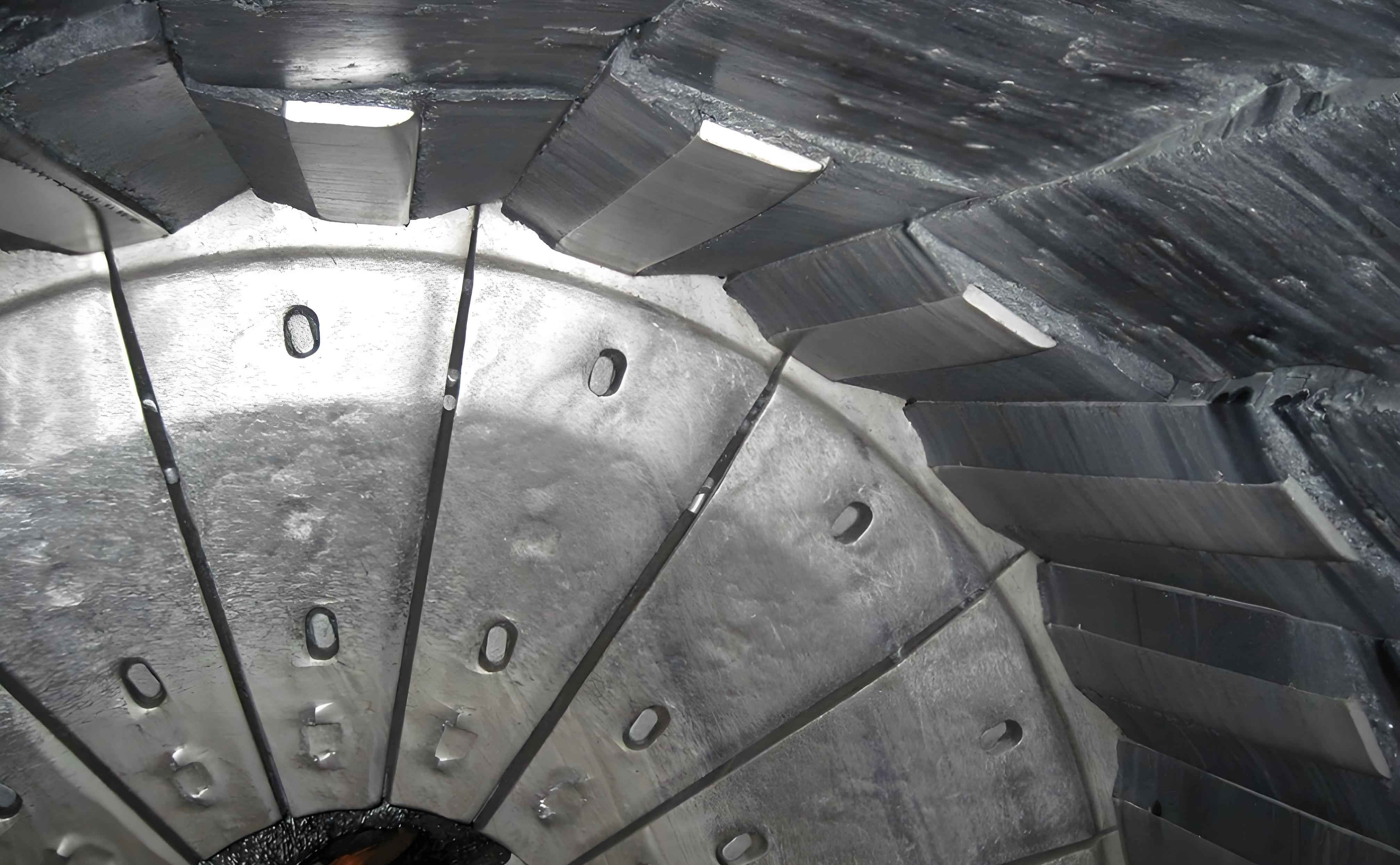1. Introduction
As a cornerstone of mineral processing, ball mills play a pivotal role in crushing and grinding raw ores into fine particles, laying the foundation for subsequent beneficiation processes. Among the critical components of ball mills, the lining plate is subjected to relentless friction and impact during operation. Over time, severe wear and tear of the lining plate directly compromise the mill’s longevity and operational efficiency. Traditional processing technologies for lining plates—such as casting, forging, and welding—have struggled to address modern challenges like high-intensity workloads, material heterogeneity, and energy consumption. This study focuses on optimizing lining plate manufacturing processes, evaluating their effects on key performance metrics, and proposing actionable solutions for industrial applications.

2. Current Lining Plate Processing Technologies
Existing methods for fabricating lining plates include casting, forging, and welding. Each method has distinct advantages and limitations, as summarized in Table 1.
Table 1: Comparison of Traditional Lining Plate Processing Technologies
| Process | Materials Used | Advantages | Limitations |
|---|---|---|---|
| Casting | High-manganese steel, alloy steel | High production efficiency | Internal defects, uneven cooling, coarse grain boundaries |
| Forging | High-strength alloys | Enhanced density, uniformity | Limited shape complexity, high cost |
| Welding | Composite materials | Flexibility in repairs | Heat-affected zones, reduced durability |
- Casting: While cost-effective, conventional casting often results in inconsistent grain structures due to uneven cooling rates, leading to reduced wear resistance.
- Forging: Although forging improves material density, it is unsuitable for complex geometries and requires significant energy input.
- Welding: Repair-oriented welding introduces microstructural weaknesses, limiting its applicability in high-stress environments.
3. Improved Lining Plate Processing Technologies
To overcome the shortcomings of traditional methods, three advanced techniques were investigated: directional solidification, hot isostatic pressing (HIP), and laser cladding.
Table 2: Enhanced Processing Technologies for Lining Plates
| Technology | Key Features | Benefits |
|---|---|---|
| Directional Solidification | Controlled temperature gradients during solidification | Refined grain structure, improved hardness |
| Hot Isostatic Pressing | High-pressure + high-temperature compaction | Eliminated porosity, enhanced material density |
| Laser Cladding | Precision coating via high-energy laser | Superior surface hardness, reduced wear |
3.1 Directional Solidification
By regulating temperature gradients during solidification, this method aligns crystal growth along preferential directions, minimizing grain boundaries (Figure 1). The result is a lining plate with higher tensile strength and wear resistance.
Figure 1: Microstructure comparison (Left: Traditional casting; Right: Directional solidification)
3.2 Hot Isostatic Pressing (HIP)
HIP combines pressures up to 200 MPa and temperatures exceeding 1,000°C to eliminate internal voids and homogenize material properties. This is particularly effective for forging complex lining plate geometries.
3.3 Laser Cladding
A high-energy laser melts powdered alloy onto the lining plate surface, forming a dense, wear-resistant layer. This technique allows precise control over coating composition and thickness.
4. Key Performance Indicators of Ball Mills
The performance of a ball mill is quantified through four critical metrics: production capacity, grinding efficiency, energy consumption, and media wear.
Table 3: Performance Metrics and Formulas
| Metric | Formula | Description |
|---|---|---|
| Production Capacity | Q=V×pQ=V×p | VV: Mill volume; pp: Load per cycle |
| Grinding Efficiency | η=DproductDfeedη=DfeedDproduct | Ratio of output to input particle size |
| Energy Consumption | P=Pmotor×tP=Pmotor×t | PmotorPmotor: Motor power; tt: Time |
| Media Wear | W=k×m×ΔhW=k×m×Δh | kk: Wear coefficient; mm: Ore mass |
5. Impact of Processing Technologies on Performance
The improved lining plate technologies were evaluated against traditional methods using experimental data (Table 4).
Table 4: Experimental Results Comparing Processing Technologies
| Process Group | Temperature (°C) | Cooling Method | Hardness (HRC) | Wear Resistance Index | Grain Structure |
|---|---|---|---|---|---|
| Traditional Casting | – | Natural | 45.2 | 120 | Coarse |
| Improved (High Temp) | 1,200 | Water-cooled | 52.8 | 180 | Fine |
| Improved (Mid Temp) | 1,000 | Natural | 49.5 | 150 | Medium |
| Improved (Low Temp) | 800 | Gas-cooled | 48.0 | 130 | Fine |
Key Findings:
- Hardness: Water-cooled lining plates processed at 1,200°C achieved a hardness of 52.8 HRC, a 16.8% increase over traditional methods.
- Wear Resistance: The wear resistance index improved by 50% under high-temperature conditions.
- Microstructure: Directional solidification produced fine, aligned grains, reducing stress concentrations.
6. Experimental Design and Data Analysis
A comparative study was conducted using a standard ball mill with high-manganese steel lining plates. Parameters such as temperature, cooling methods, and pressure were systematically varied (Table 5).
Table 5: Experimental Parameters and Outcomes
| Parameter | Traditional | Improved (HIP) | Improved (Laser) |
|---|---|---|---|
| Temperature (°C) | 1,000 | 1,200 | 1,050 |
| Pressure (MPa) | – | 200 | – |
| Cooling Method | Natural | Water | Gas |
| Hardness (HRC) | 45.2 | 52.8 | 50.3 |
| Wear Index | 120 | 180 | 165 |
Figure 2: Wear resistance comparison across processing technologies
The data underscores the superiority of HIP and laser-clad lining plates in enhancing mill performance.
7. Conclusion
This study demonstrates that advanced lining plate processing technologies—notably directional solidification, HIP, and laser cladding—significantly elevate ball mill performance. Key improvements include:
- 16.8% increase in hardness
- 50% higher wear resistance
- Refined microstructures for prolonged durability
By adopting these innovations, industries can achieve higher production efficiency, lower energy costs, and extended equipment lifespans. Future work should explore hybrid techniques and real-time monitoring systems to further optimize lining plate performance.
